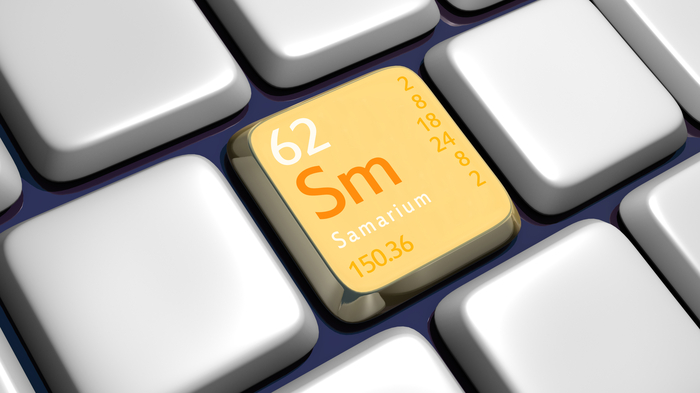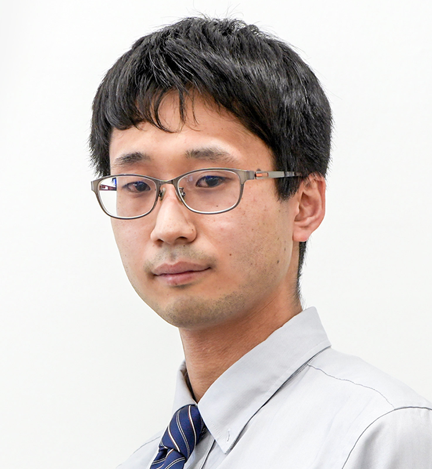The ligand makes it possible to use more stable trivalent samarium compounds, which get reduced to divalent samarium upon visible-light irradiation
Divalent samarium compounds are important reagents for reductive transformations in organic chemistry. However, currently, a high amount of this reagent is required in most reactions, and it also necessitates the use of harmful chemicals. To address this issue, researchers have developed a visible-light-antenna ligand that coordinates with stable trivalent samarium compounds, which, upon exposure to visible light, are reduced to divalent samarium, enabling milder conditions and smaller amounts of samarium for reactions.

Image title: Samarium (Sm), a rare earth metal, is widely used in organic chemistry
Image caption: The new visible-light antenna developed in the study can significantly reduce the amount of Sm required in reactions, paving the way for efficient and sustainable synthesis of pharmaceuticals and other functional molecules.
Image credit: Terrence Wright from London Commodity Markets on Flickr
Image link: https://openverse.org/image/29126142-c8a4-4046-a148-49c296938c89
Image license: CC BY-NC-SA 2.0
Usage restrictions: You are free to share and adapt the material. Attribution is required. You may not use the material for commercial purposes. If you adapt the material, it must be distributed under the same license as the original.
Samarium (Sm), a rare earth metal, is important to organic chemists because of the ability of its divalent compounds to efficiently perform single-electron transfer reductions. Samarium iodide (SmI2) is moderately stable and can operate under mild conditions at room temperature, making it highly useful for producing pharmaceuticals and biologically active materials. However, most reactions require SmI2 in quantities equal to or greater than the stoichiometric amount and necessitate the use of harmful chemicals, making the process resource-intensive and expensive to manage.
Several approaches have been studied to reduce the amount of Sm reagents to catalytic amounts. However, most of the currently available methods require harsh conditions and highly reactive reducing agents and still require significant amounts of Sm, typically 10–20% of the raw materials. Considering the high cost of Sm, there is a significant demand for an efficient catalyst system that uses minimal Sm under mild conditions.
In a recent breakthrough, a research team from Chiba University in Japan, led by Assistant Professor Takahito Kuribara from the Institute for Advanced Academic Research and the Graduate School of Pharmaceutical Sciences, developed an innovative method that significantly reduces the amount of Sm. The team developed a 9,10-diphenyl anthracene (DPA)-substituted bidentate phosphine oxide ligand for coordination to trivalent samarium, enabling the use of visible light to facilitate Sm-catalyzed reductive transformations. They call this ligand a visible-light antenna. Assistant Professor Kuribara explains, “Antenna ligands are known to help in the excitation of lanthanoid metals like Sm. Previously, we reported a DPA-substituted secondary phosphine oxide ligand capable of reduction-oxidation reactions under visible light. Inspired by this, we designed a new DPA-substituted bidentate phosphine oxide ligand that uses visible light to reduce the amount of Sm to a catalytic level.”
The team included Ayahito Kaneki, Yu Matsuda, and Tetsuhiro Nemoto from the Graduate School of Pharmaceutical Sciences at Chiba University. Their study was made available online on July 20, 2024, and published in Volume 146, Issue 30 of the Journal of the American Chemical Society on July 31, 2024.
Through a series of experiments, the research team showed that using the Sm catalyst in combination with DPA-1 under blue-light irradiation produced high yields of up to 98% for pinacol coupling reactions of aldehydes and ketones, which are commonly used in pharmaceuticals. Remarkably, these reactions could proceed with only 1-2 mol% of the Sm catalyst, a significant reduction compared to the stoichiometric amounts typically required. Furthermore, the reactions could proceed even with mild organic reducing agents like amines, in contrast to the highly reducing agents previously used.
The results showed that the addition of a small amount of water improved yields, while excess water inhibited the reaction. In comparison, DPA-2 and DPA, which have similar structures to DPA-1, yielded poor results.
To understand why DPA-1 was so effective, the researchers studied the emission characteristics of the Sm catalyst and DPA-1 combination. They found that DPA-1, with its visible-light antenna, functions as a multifunctional ligand that coordinates with Sm, selectively absorbs blue light, and efficiently transfers electrons from the antenna to Sm.
The researchers successfully applied the Sm catalyst and DPA-1 combination to various molecular transformation reactions, including carbon-carbon bond formation and carbon-oxygen and carbon-carbon bond cleavage, which are crucial for drug development. Moreover, by utilizing visible light as an energy source, they also achieved molecular transformations that combined Sm-based reduction with photo-oxidation.
“Our new visible-light antenna ligand reduced the amount of Sm to 1–2 mol%, a significant decrease compared to the stoichiometric amounts typically required, by utilizing low-energy visible light,” remarks Assistant Professor Kuribara. Adding further, he says, “Importantly, we were able to use trivalent Sm as the starting material, which is more stable and easier to handle as compared to divalent Sm.”
Overall, this study provides valuable insights for further development and design of Sm-based catalysts, marking a significant step forward in organic chemistry by enabling efficient Sm-catalyzed reductive transformations under mild conditions with minimal Sm loading.
About Assistant Professor Takahito Kuribara
Takahito Kuribara is currently an Assistant Professor at the Graduate School of Pharmaceutical Sciences at Chiba University, Japan. He is also currently affiliated with the Institute for Advanced Academic Research at Chiba University. He obtained his B.S. and Ph.D. degrees from Chiba University in 2020 and 2023, respectively. In 2023, he received the President’s Award for academic performance excellence at Chiba University. His research interests include catalysts, light energy, reduction reactions, and bioactive molecules.
Funding:
This work was supported by JSPS KAKENHI grant number 23K19421 (T.K.), the Sasakawa Scientific Research Grant from The Japan Science Society (T.K.), and JST SPRING, grant number JPMJSP2109 (Y.M.).
Reference:
Title of original paper: Visible-Light-Antenna Ligand-Enabled Samarium-Catalyzed Reductive Transformations
Authors: Takahito Kuribara1,2, Ayahito Kaneki1, Yu Matsuda1, Tetsuhiro Nemoto1
Affiliations:
1Graduate School of Pharmaceutical Sciences, Chiba University, Japan
2Institute for Advanced Academic Research, Chiba University, Japan
Journal: Journal of the American Chemical Society
DOI: 10.1021/jacs.4c05414
Contact: Takahito Kuribara
Graduate School of Pharmaceutical Sciences, Chiba University
Email: t_kuribara@chiba-u.jp
Public Relations Office, Chiba University
Address: 1-33 Yayoi, Inage, Chiba 263-8522 JAPAN
Email: koho-press@chiba-u.jp
Tel: +81-43-290-2018
Recommend
-

From ELSI to RRI: Exploring the Ethical Landscape of Science and Technology
2024.11.21
-

Making the Invisible Visible: Drones Enabling Agricultural Advances
2022.10.17
-

Towards a self-sustainable natural environment: The science of restoration ecology, where researchers engage in conversation with the earth
2023.02.02


